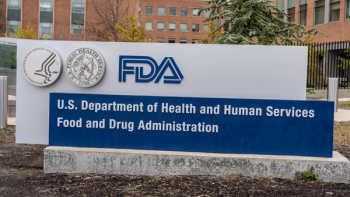
EMA Returns to the Fray on Adaptive Pathways
The European Medicine Association is determined keep open all options on the future of drug approvals in advance of a crucial meeting in December, writes Peter O'Donnell.
Undaunted in its determination to keep open all options on the future of drug approvals, the European Medicines Agency (EMA) is pulling out all the stops in advance of a crucial meeting in early December. Not only is it bringing many of Europe's leading thinkers on the subject to its London headquarters to reflect more closely on its adaptive pathways program - its plan to bring approval processes into line with 21st century medicine; it has even issued participants with a lengthy "guide" to its views, and it wants everyone to absorb it before they turn up, so as - it says - "to support productive discussion." It enjoins participants: "We advise you to read the briefing book in full prior to the meeting."
EMA's careful preparation is based on its apprehensions that the European debate on new approaches to medicines assessment is spinning dangerously out of control. And its apprehensions are well-founded. As soon as the agency's senior officials raised questions five years ago over whether traditional approval procedures were still capable of meeting unmet medical need in a rapidly-evolving scientific environment, sceptical and conservative Europeans began to warn against any risky departure from gold-standard clinical trials. And in 2014, when the agency launched a pilot project to explore possible alternative approaches, the skepticism turned to outright hostility from some civil society groups, scientific bodies, and national government advisers. So much so that by the time the pilot project came to an end earlier this year, there was a risk that the swelling opposition might kill off any chances of further exploration.
EMA now wants to shore up the chances of continuing constructive technical discussion. It is aware that its options could soon be limited by widening negative perceptions of its initiative - or even foreclosed by policy decisions from hyper-cautious health ministers. There is a powerful "if it's not broken, don't try to fix it" school of thought that has been gaining sway over the agency's concerns that science is moving faster than regulatory systems are able to keep up with.
So to counter accusations of jeopardizing patient safety and public health budgets, or of mounting a centralized power grab, or of offering drug firms premature market access, the agency has spelt out its progress and plans in unprecedented detail. It even presents examples - albeit anonymized - of the products that have been explored in the framework of its pilot, with outlines of the sort of regulatory and scientific questions that officials from the agency and health technology assessment bodies have confronted.
The case that the agency makes in its defence is that only new approaches can - and should be allowed to - reduce redundant/additional studies by optimising the collection and use of clinical data, and cut the time-lag between regulatory approval and patient access. They can also make better use of real world data to boost understanding of how treatments actually perform in the daily clinical setting. And they can make the most of prospectively planned post-authorization activities.
If advantage is not taken of such new opportunities, the agency argues, reimbursement may be delayed, especially for products where current procedures do not provide sufficient information for authorities to make a decision - as in the case, EMA says, of new antimicrobials, Alzheimer’s and other degenerative diseases, and rare cancers. In addition, emerging treatment options such as gene therapy will also be compromised, it says.
The workshop will tackle the doubters head-on in the most sensitive areas of debate, including how patients and healthcare professionals feel about unmet need, how real world data can be better used, and how health technology assessors and drug budget payers can be more involved. The agency politely notes that "stakeholders’ interest has been high", and adds with fine ambiguity that feedback from civil society and researchers on the approaches "must be given the appropriate weight." At the same time, its upcoming workshop is designed "to explain aspects of the adaptive pathways concept."
One of those aspects the agency seizes upon straight away, in a pre-emptive strike at one area of contention, is the legal framework. There is no question of changing the basic rules, says EMA. The just-completed pilot has shown, it says, that "the adaptive approach can take place within the existing regulatory tools and processes." Nor is the adaptive pathways approach intended to apply to all products: it focuses on unmet needs. In other words, any fears that EMA is subverting current safeguards and opening the door to chaos are groundless.
Reassurance is also offered that the aim is not to create a system that will squeeze out dissenting or critical voices in the assessment process for potentially valuable medicine, the agency argues. On the contrary, it is to "increase the availability of relevant expertise from all stakeholders." But, the agency goes on to remark with striking candour, not everyone's views are equally valid or relevant or adequate. One of the findings of its piloting of parallel discussions between EMA and HTA bodies on regulatory and scientific issues is that "not all stakeholders currently involved are competent to address these questions."
The preparations for the workshop also display EMA's desire to parry some ill-conceived attacks before they are launched. "Speakers at the workshop are encouraged to frame the discussion in light of the practical experience gained during the pilot," it says. In other words, "let's leave out all the idle speculation about what could conceivably go wrong, and stick to the concrete issues." This is why the briefing document presents anonymized cases of products submitted for the pilot where the conduct of randomized trials was difficult.
The agency is also keen to avoid accusations that it is monopolising discussion or imposing its view. People attending the meeting will be encouraged, "if desired, to suggest potential alternative solutions." Again to paraphrase the agency's meaning: " We are aiming to offer regulatory mechanisms to help promising new medicines reach patients in a timely manner. So don't come here just to bitch about us. If you've got a better answer to the questions we pose, then let's hear it. If you haven't, then shut up and listen and learn."
Opportunities created by a disease-modifying drug for a well documented degenerative disease would be missed under current procedures, says the agency, by way of example. It would take a long time - too long - to start assessing whether the treatment could benefit pre-symptomatic patients. By contrast, in an adaptive pathways approach, scenarios can be discussed to define the conditions under which it may be possible to initiate trials earlier, and to design these trials to address the needs of all stakeholders - patients, healthcare professionals, researchers, regulators and the authorities that pay for healthcare. This approach has the advantage of allowing preliminary discussion of potential scenarios, in advance of any commitment either from the authorities or from the company developing the treatment, and before the full protocols for the chosen pathway are developed.
Above all, the underlying fear in many criticisms of the EMA initiative is that earlier access to innovative medicines may send drug budgets spiralling out of control. EMA carefully sidesteps this issue in its preparatory guide. "Affordability… might be more of an issue for consumer bodies and payers rather than for patients and healthcare professionals," it says, with an assumption of Olympian detachment. EMA knows that prices and access are outside its mandate, so it meticulously avoids queering its own pitch by any ill-judged attempt to offer a solution to issues beyond its competence. But it is well aware that this is an aspect that will have to be resolved - and it makes no secret of its expectations that the issue will come up at its workshop. "It may be raised at the workshop discussion by the competent stakeholders," EMA notes, primly. What it does not go on to say, but which is a clear implication of its stance, is that it is high time that "competent stakeholders" - that is, healthcare payers - get involved in these discussions and start coming up with answers.
The EMA meeting is scheduled for December 8. The guide is available at
Newsletter
Lead with insight with the Pharmaceutical Executive newsletter, featuring strategic analysis, leadership trends, and market intelligence for biopharma decision-makers.




